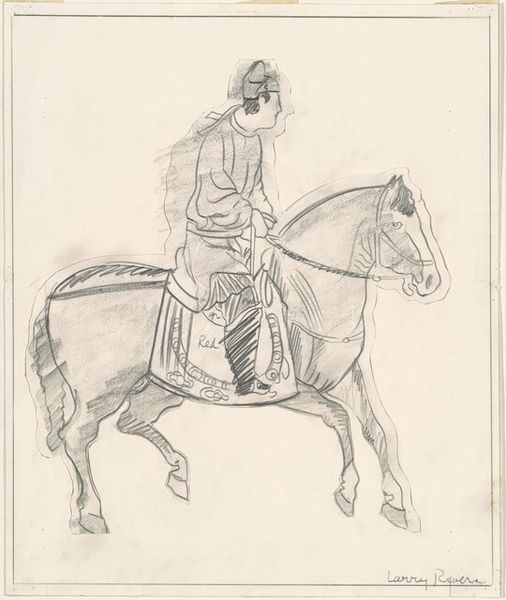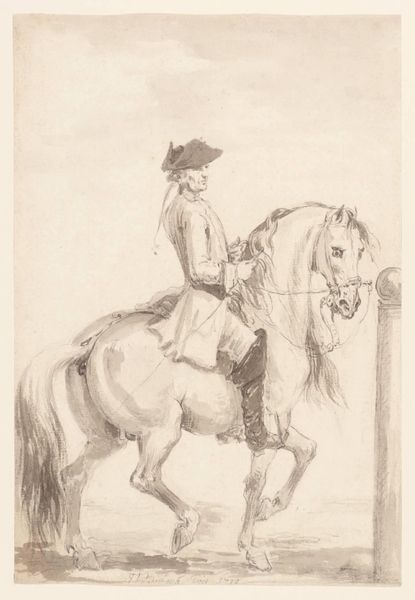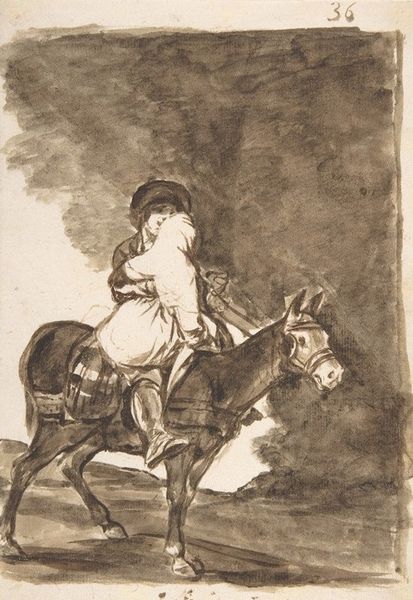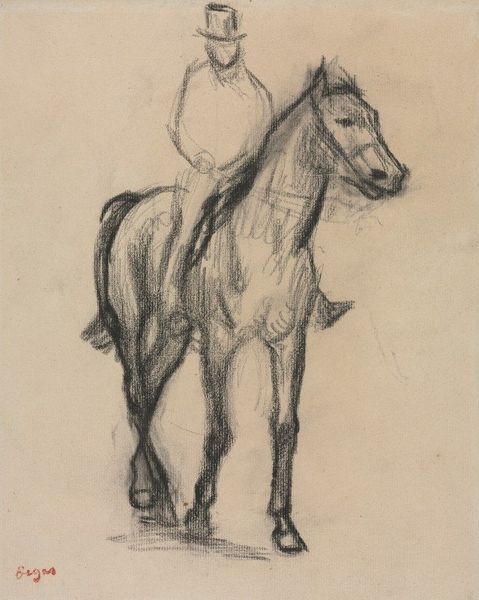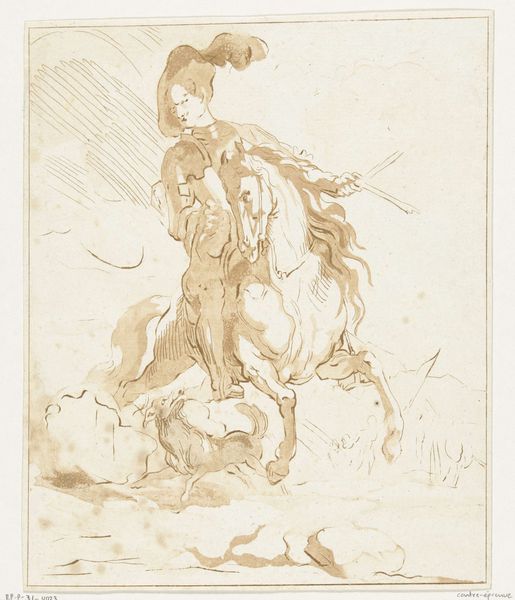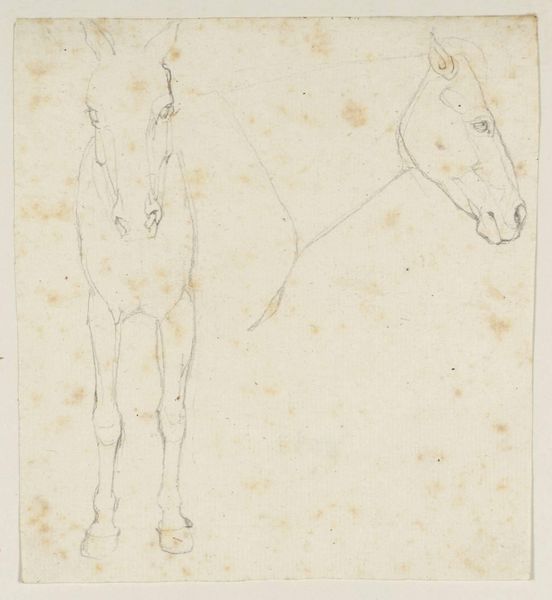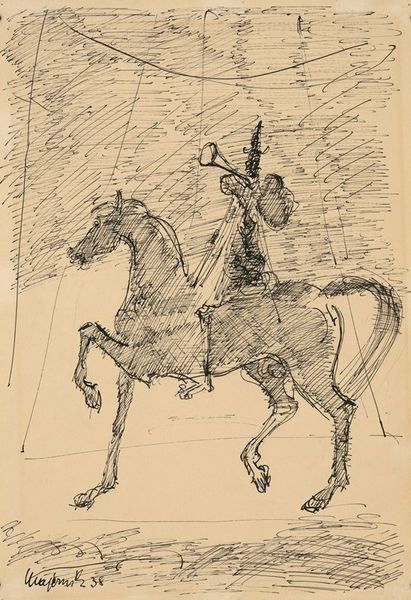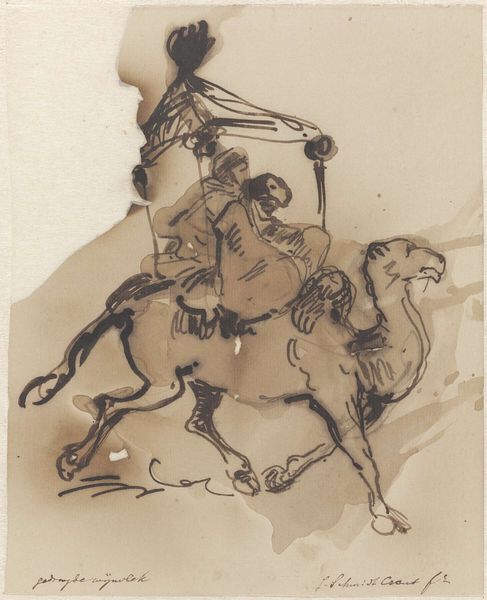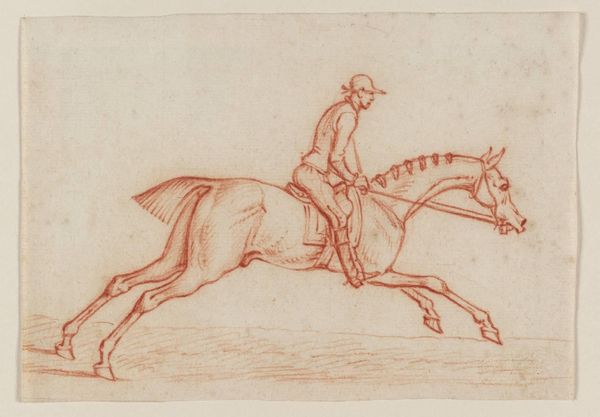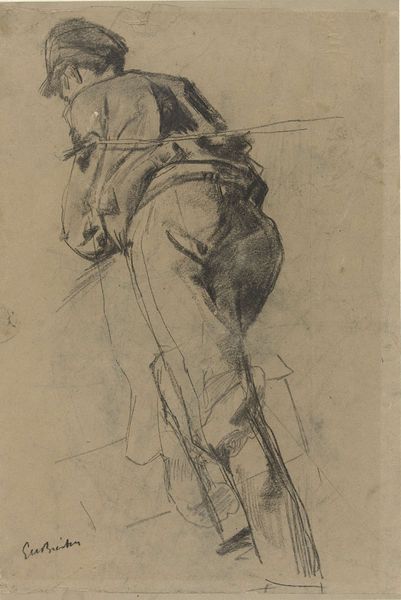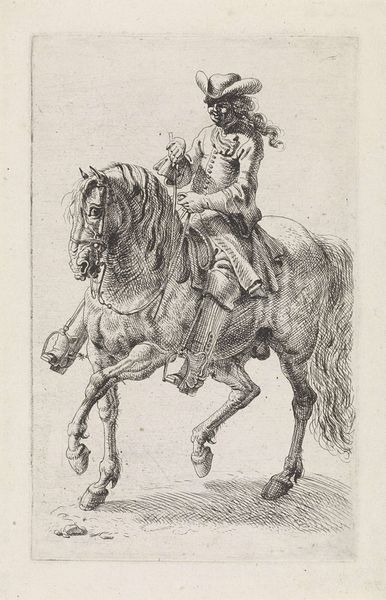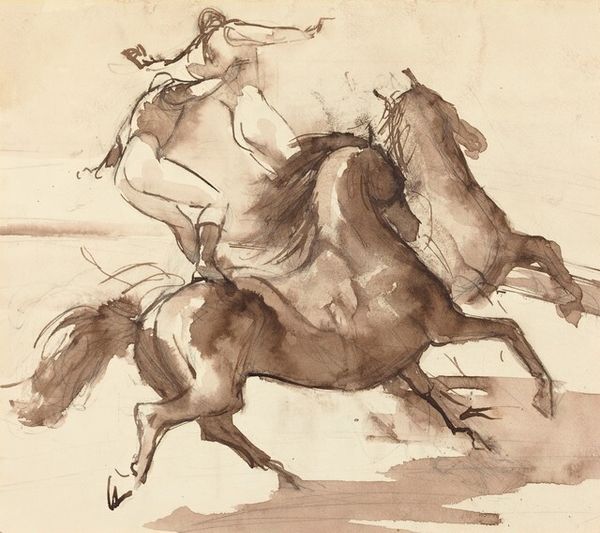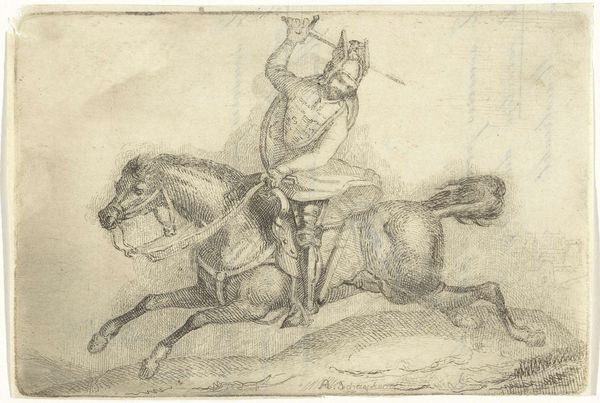
Copyright: Public Domain: Artvee
Edgar Degas made this drawing of a Jockey with pastel and charcoal on paper. These materials are immediate, meaning Degas could rapidly capture the scene before him. The blue and brown hues define the horse and rider, with smudges of color suggesting movement and energy. The graininess of the charcoal creates depth and texture, enriching the visual experience. While pastel and charcoal are traditional art materials, the way Degas uses them reflects his broader interest in capturing modern life. Consider that horse racing in Degas’s time was associated with both aristocratic tradition and the rise of a leisure culture driven by industrial capitalism. There is a sense of social observation here, a glimpse into a world of spectacle and sport. By focusing on Degas's chosen mediums and the immediacy of his drawing technique, we see how closely bound the artwork is to its moment in history, transcending traditional distinctions between fine art and cultural documentation.
Comments
No comments
Be the first to comment and join the conversation on the ultimate creative platform.
